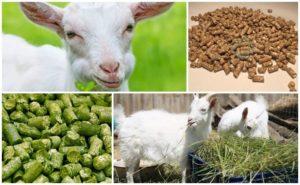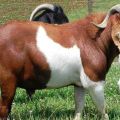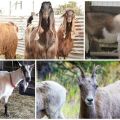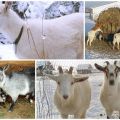What breed do goats without ears belong to, characteristics and content of lamanches
Nature creates many strange and unusual creatures, but, in most cases, they live somewhere in exotic places or in the depths of the ocean. Meanwhile, among the pets we are accustomed to, there are those that are quite capable of capturing the imagination. For example, people far from animal husbandry hardly know that there are goats without ears, and what breed it is, where it lives, what it feeds on.
Origin story
The deaf goats are called lamancha. As the name implies, the place where the breed was formed and became famous is Spain, the Iberian Peninsula. These specific animals, most likely, descended from ancestors exported from Persia, and then from Africa. Together with the Moors, the goats entered Spanish territory, successfully acclimatized there and became the founders of a new breed.
The name "La Mancha" is not only a reference to the area - the Spanish province of the same name. This word means "spot", which reflects the characteristic features of the appearance of animals.
Description and characteristics of goats without ears
In fact, the earless goat is not at all devoid of ears, they just grow up in a "mini-format". Her auricles are so small that they are almost invisible, especially in comparison with the size of the head. Because of this feature, goats have an extraordinary expression of the muzzle, which gave rise to the nickname "monkeys".
These cute animals can have different colors, from white to dark, and also differ in spotted, longitudinal stripes along the ridge. They have a soft, dense coat, it is short and long, but in the latter case it is sheared to give the goats a neater appearance.

In animals, the body is in the form of a wedge, a massive udder, which indicates that the breed belongs to the dairy direction. Animals are medium-sized, strong, on strong slender legs. The height at the withers of the female is 71 centimeters, and of the goat is 76 centimeters. Among animals, there are both horned and hornless (hornless).
According to the type of ears, the Lamanches are divided into two types:
- Elven, with small pointed ears no more than 5 centimeters long.
- Gophers, or corrugated, with ears up to 2.5 centimeters, tightly pressed to the head.
Oversized ears cause the animal to be denied purebredness, even though specific traits are passed on to the offspring when crossed.
Pros and cons of the La Mancha breed
The disadvantages include the requirements for the nutritional value of feed, otherwise the milk production of goats without ears may fall. Also, animals need to be provided with hygienic conditions, because they love cleanliness - rooms, bedding, food and water.
Requirements for maintenance and care
Representatives of this breed do not have any special requirements for the content. They need an insulated goat's house with a corral where the animals can walk in the fresh air at any time of the year. It is very important that the areas where the herd are kept are perfectly clean. This is important for the high productivity of dairy females, the health of the entire livestock, as well as maintaining a specific feature of animals of this breed - the absence of odor.
Diet
You need to feed the deaf goats of the La Mancha breed 2 times a day, they give plenty of water. She, like food, must be clean. Almost everyone eats animals, you just need to make sure that no poisonous plants get into their food.
For the winter, you need to store a lot of high-quality hay, especially if the goat is pregnant or feeding the kids.
Also, don't forget about adding minerals. Lick salt should be freely available, soda is occasionally added to the feed, and iodine is dripped into the water to prevent diseases. This helps keep the Lamancha goats strong and healthy.

Reproduction
Hunting in females begins in autumn or winter, lasts from one to two days, the cycle is 21 days. The duration of pregnancy is 155 days. Most often, there are two kids in the litter, less often triplets are born. Eared goats have a bulky udder for their size, due to which they are distinguished by high productivity and produce milk with a fat content of 4%. On average, a goat gives 3-4 liters of milk per day, but the record holders reach 5 liters. Goats are milked for at least 10 months, but there are those that can give milk for two years in a row, while they do not need to become pregnant again and bring kids for this.
Frequent illnesses
The deaf Lamancha goats are distinguished by stable health, hardy and indifferent to cold weather, therefore they are not very susceptible to colds. Generally, goats suffer from parasites, mastitis, poisoning from stale food or toxic plants, and hoof inflammation.
Health problems can be avoided with the help of a well-composed diet, careful care, cleanliness in the barn and the animal itself. Goats are affectionate, they need love, care and attention, so you need to communicate with them like with pets. They behave like cats or puppies, flatter and run after their owners.
For the prevention of infectious diseases, it is necessary to carry out examinations and vaccinations on time. It is not necessary to have a full-time veterinarian in a standard household farm. But on a professional farm specializing in the production of expensive cheeses from goat's milk, this is an important condition. Careful attention to the dairy herd can prevent numerous troubles and financial losses.
With proper and careful care, animals are distinguished by fertility and milk yield, good health and an extraordinary attractive appearance.












